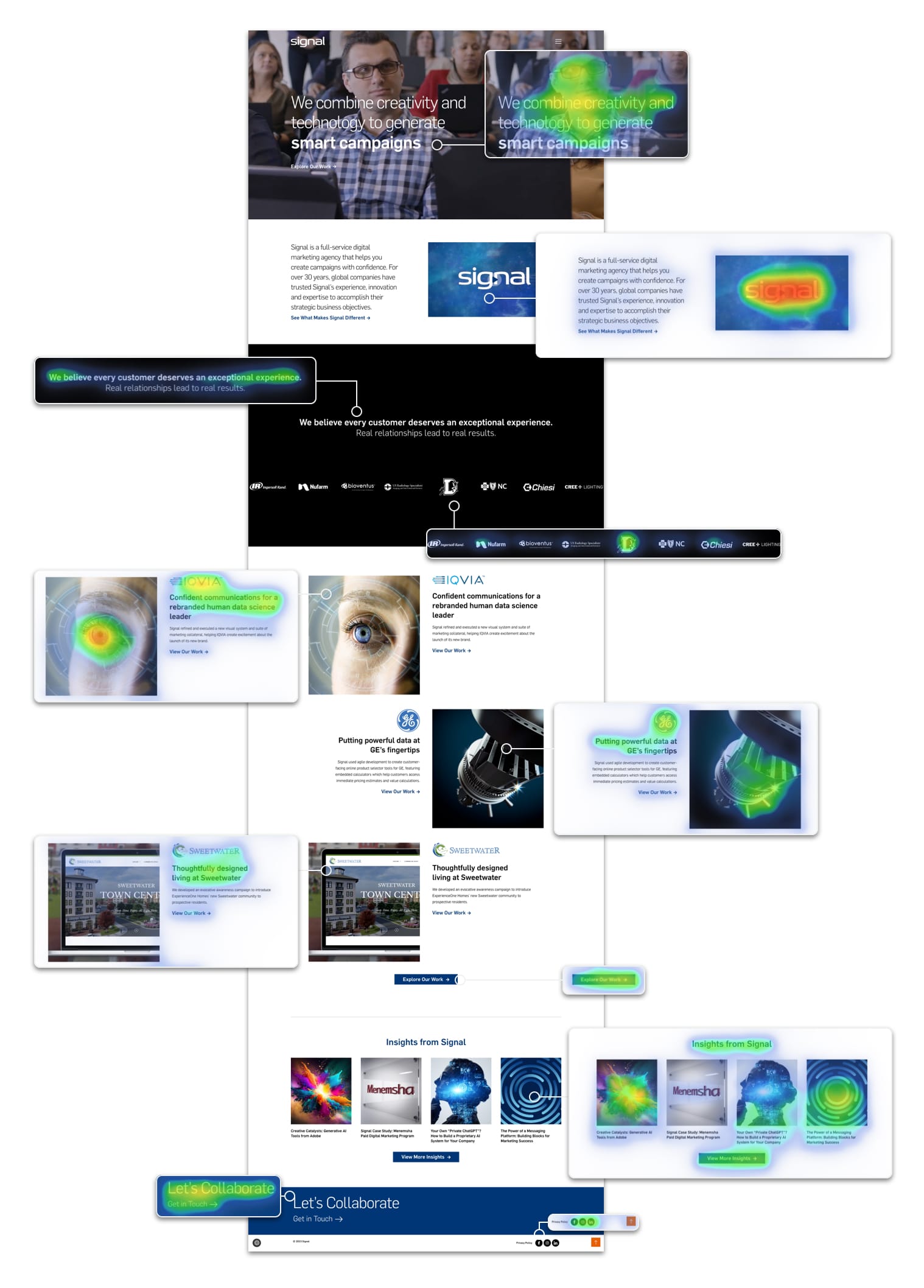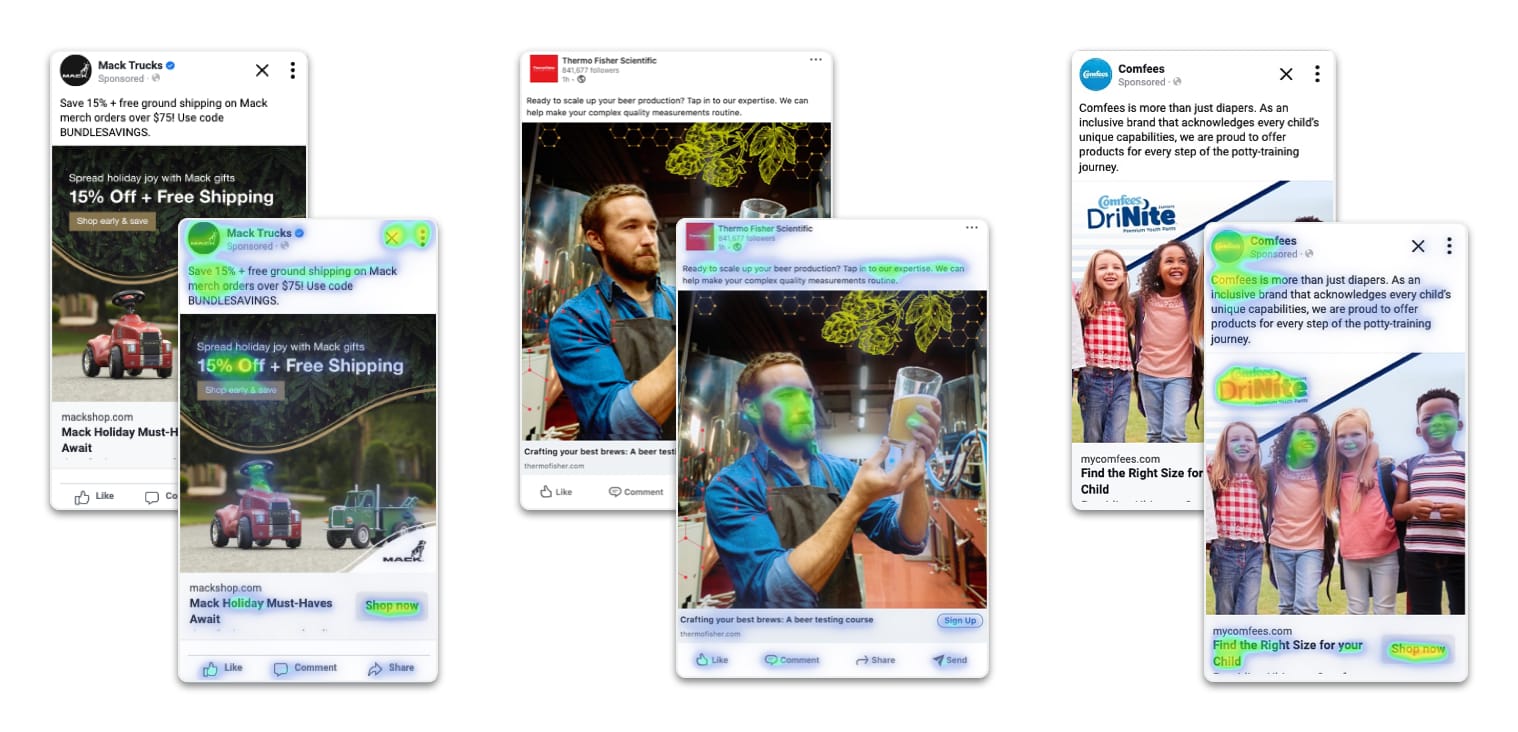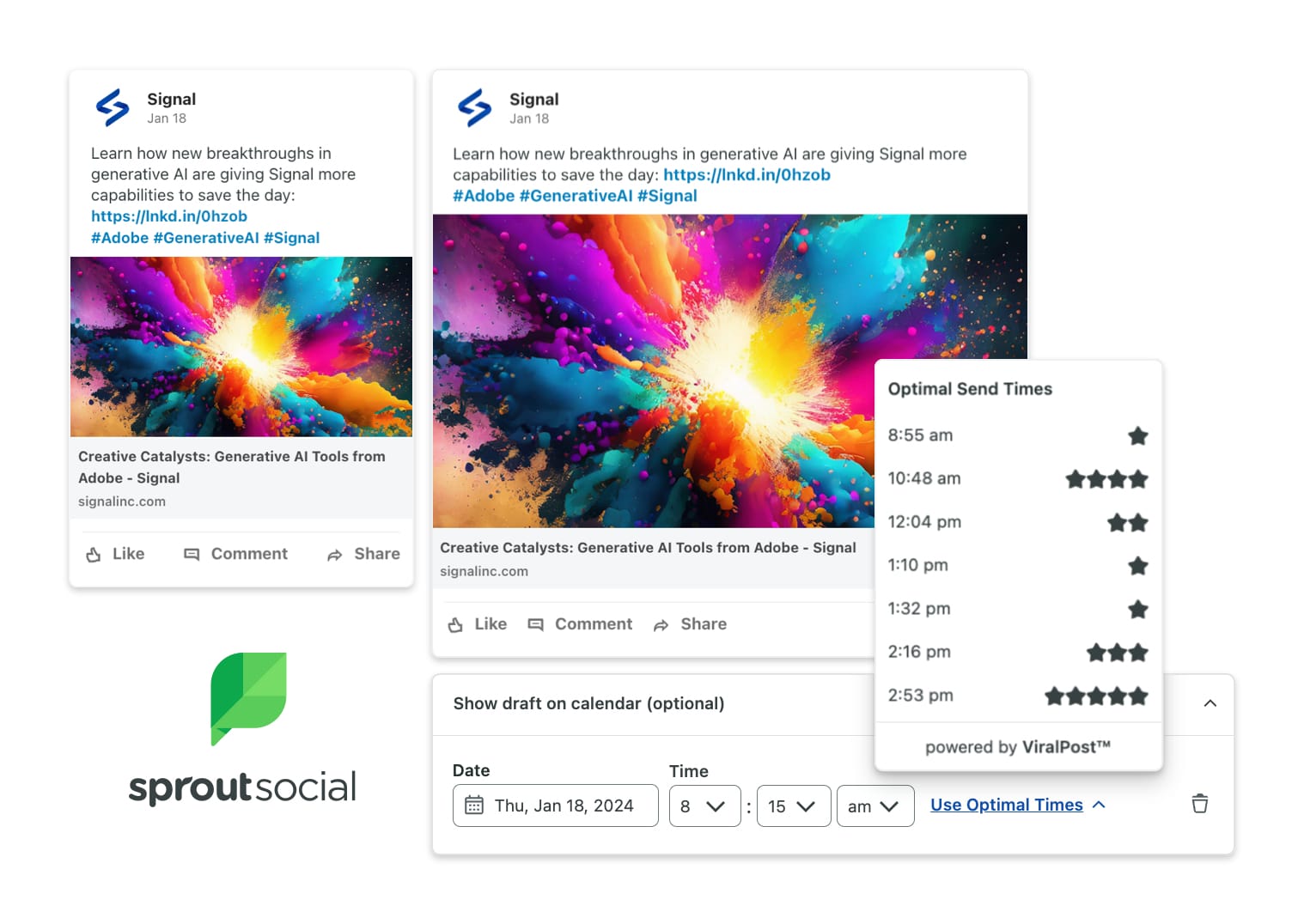
The ability to see the future is a power oft-written about in sci-fi as a far-away fantasy. For Signal, that future is now with the use of predictive AI.
Predictive AI uses historical data and machine learning to forecast future trends, equipping us with the power of informed decision-making. These technologies can assist businesses in anticipating customer behavior, ultimately enhancing overall performance and competitiveness. In the world of marketing, this means using AI to review design and strategy to proactively optimize tactics and increase conversions.
AI Heatmaps: Predicting How Consumers Will Interact
Heatmaps are perhaps best known for their use in the field of UX. Freemium platforms like Hotjar and Fullstory allow website owners to see how users behave on a website, tracking clicks and scrolls to understand what users are drawn to and what they ignore. Signal has long incorporated heatmaps into our UX and web projects to evaluate performance and further optimize our clients’ websites. Now, there are AI heatmapping tools on platforms like Attention Insight and Zyro that use machine learning algorithms to forecast how users will behave on websites, rather than waiting for site data to accumulate. While these aren’t foolproof, they are trained on previous data and can be an easy way to spot-check for any glaring optimizations that need to be addressed. Signal can use these AI tools to quickly diagnose what changes should be made before a client’s website launch or soft launch, so that a new or redesigned website can have the highest impact before seeing an audience.
Now, there are AI heatmapping tools on platforms like Attention Insight and Zyro that use machine learning algorithms to forecast how users will behave on websites, rather than waiting for site data to accumulate. While these aren’t foolproof, they are trained on previous data and can be an easy way to spot-check for any glaring optimizations that need to be addressed. Signal can use these AI tools to quickly diagnose what changes should be made before a client’s website launch or soft launch, so that a new or redesigned website can have the highest impact before seeing an audience.
Neurons has reimagined heatmaps by creating Predict, an AI that anticipates which aspects of creative an audience will pay attention to. Tried and true, the Predict model was built on data collected from 100,000 test users worldwide and trained using more than 100 machine learning models. Predict allows businesses to create well-performing creative that makes a lasting impression. The tool can be integrated into Figma, Chrome and Adobe XD.  Signal is excited to use predictive AI tools like these to judge initial concepts, enhance designs in real time, and show clients how their current designs can be improved.
Signal is excited to use predictive AI tools like these to judge initial concepts, enhance designs in real time, and show clients how their current designs can be improved.
Forecasting When Posts Will Perform Best
For social media managers, what time to post is widely debated – often leading to more questions than answers. With tools like “Optimal Send Times” on Sprout Social, the answer is straightforward.
Sprout Social uses their ViralPost algorithm to analyze audience engagement patterns and content velocity among other factors to detect the most active times for authentic engagement. It’s calculated for each unique profile on each specific day. Signal uses this tool to ensure our clients’ organic social posts reach their follower-base at the most ideal times, enabling higher engagement and better performance.
Competitors like Hootsuite and SOCi have similar features on their respective platforms.
Closing Thoughts
It’s essential that marketers have a firm grasp on their audience’s desires and behaviors. As the AI zeitgeist unfolds, platforms will continue to incorporate machine learning and predictive AI into their features and products, allowing us to anticipate the behavior of our clients’ target audiences and plan for success several steps ahead.






